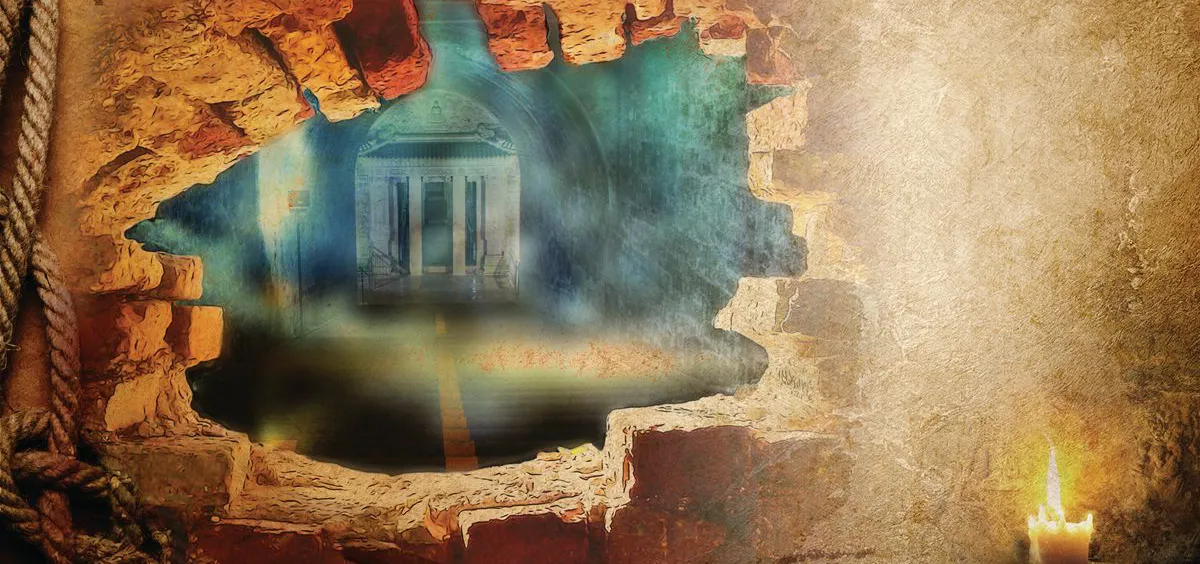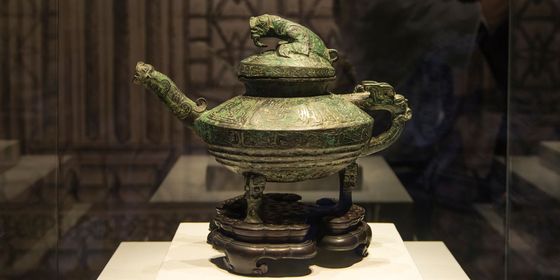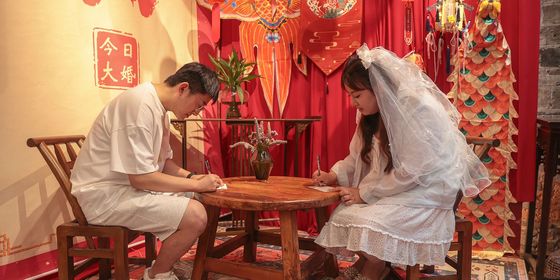For China’s tomb robbers, an ancient business is still booming
In 2003, farmers ploughing in Qishan county, Shaanxi province, unearthed a pit deep and unusual enough to have them send for a team of local archeologists. The experts were soon excited to find what seemed to be traces of a grand group of tombs from the Western Zhou dynasty (1046 – 771 BCE).
Ancient bronze ware, pieces of tortoiseshell, and over 700 scraps of oracle bones, inscribed with an array of terms like “sacrifice,” “war” and “Duke of Zhou,” suggested that the farmers had stumbled across a rare aristocratic find; Zhou oracle bones had only been found before in eight sites, and the range of characters suggested this was likely to be another landmark discovery.
By October 2004, the archeologists had acquired the approval of the State Administration of Cultural Heritage to gather in Qishan and begin an official excavation of this Zhou mausoleum. Among all the graves, experts held the highest hope for Tomb No. 32. By the time they’d cleared the earth in January the following year, though, the team was in shock. All that were left inside were a few scattered water bottles, intercoms, and flashlights; this ancient treasure trove had been ransacked before the archeologists even arrived.
In recent decades, “around 200,000 ancient tombs have been plundered,” Zhang Bo, former deputy director of the National Cultural Heritage Administration, told a Japanese journalist at a 2015 press conference. An apparently well-known saying in China’s archeological circles, “Nine out of ten tombs have been emptied,” emphasizes the severity of the phenomenon.

Farmers in Baoji, Shaanxi cleaning a pit opened by tomb-raiders in 1990
Famous archeologist Li Boqian made a similar claim in 2008, when he told National Geographic magazine that over 90 percent of gravesites housing members of the ancient nobility have already been illegally excavated. While statistics are incomplete, China’s State Administration of Cultural Heritage reported 103 cases of cultural relics theft in 2016 alone.
How many people are working in this shady industry? Archaeology magazine offered an appalling answer in 2015, estimating there were around 100,000 tomb raiders active across China.
“Most [tomb raiders] are not professionals,” Wei Linong, an experienced antiques collector, tells TWOC. “The majority of the so-called ‘100,000 tomb-raiders’ are made up of farmers, laid-off workers, or common rural folks. They take part in such activities just because they hear it’s an opportunity for earning money.”
Wei’s opinion was echoed by Ni Fangliu, author of several popular books about archeology and tomb raiding. “In the 1980s, the saying ‘To get rich, rob a tomb’ was very popular in provinces like Henan, Hunan, Shaanxi, and Shanxi,” he told ifeng.com in 2011.
Pop culture has added further fuel to the fire. The online fiction series Grave Robbers’ Chronicles, about a young man’s adventures in the tomb-robbing trade, became a cultural phenomenon after it was first published in 2006, spawning several TV, film, and video game adaptations. These and similar series have romanticized tomb-robbing, attracting still more amateurs to dip their toes in the trade. One 34-member gang confessed to police in Hunan in 2016 that they’d learned how to find and excavate a tomb from the Grave Robbers’ Chronicles novels and films, according to Huanqiu.com.
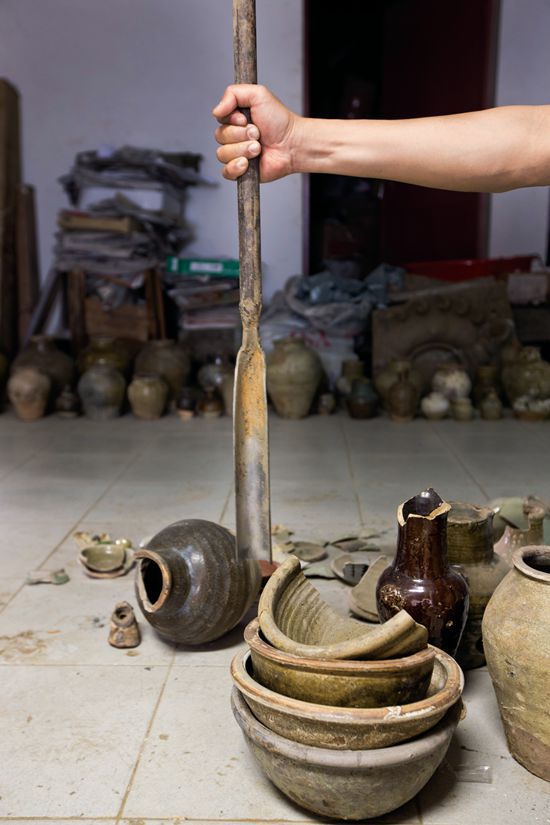
The Luoyang shovel, a tombrobbing tool
Of course, not all the players are amateurs. One in the trade is Yao Yuzhong, who was arrested in 2015 as part of the biggest antiquities-trafficking bust since the founding of the PRC, involving 225 suspects, 18 burial sites, and at least 2,063 artifacts. Supposedly known as the “grand master” among those within the tomb-raiding profession, Yao is believed to have stolen thousands of cultural relics, worth more than 500 million RMB (72,850,200 USD), over a career spanning 30 years.
Yao’s most infamous caper took place at the Hongshan Culture site, a prehistoric trove dating back nearly 5,000 years in what is now Inner Mongolia and Liaoning province. As Wang Hongyan, chief of the cultural relics protection bureau for the Chaoyang city police, told the Beijing Times after Yao’s arrest, this was a notoriously difficult site to discover, as the Neolithic tombs contained no bronze ware, gold, or silver. “There were only pottery and jades, so a metal detector was useless.”
But Yao was equal to the challenge. According to the Beijing Times, the master raider was able to determine the best place to dig by studying the rudiments of feng shui and astrology—an art he’d supposedly learned from his father—because that was how ancient Chinese decided where to place their tombs. It’s widely rumored that, when Yao appeared in court in 2016, he openly boasted of being “the reincarnation of the original tomb builder 6,000 years ago,” and claimed he “wanted to bring Hongshan Culture back to the world.” With his skills, Yao told the court, he was “better than 100 archeologists.”
Yao’s arrogance is far from groundless. In his interview with ifeng.com, Ni admitted that tomb robbers had made certain “contributions” to Chinese archeology that professional archeologists couldn’t achieve. In the early years of the PRC, many public museums hired thieves to make up for their lack of qualified experts. A tomb thief, hired by the Hunan Museum, had been the first person to determine that the Mawangdui ruin—an archeological site dating from the Han dynasty, unearthed in 1973—was an unexcavated grave.
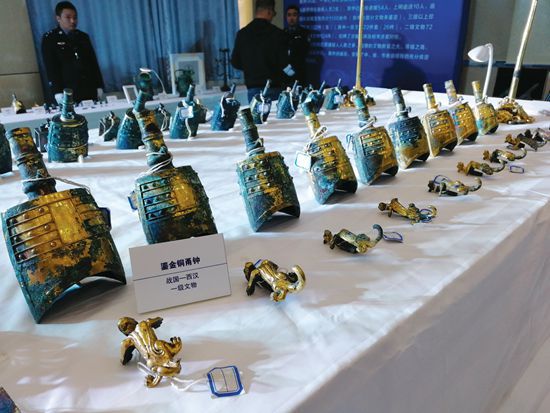
A 2017 tomb-raiding bust by Shaanxi police retrieved over 1,000 pieces of antiques
In fact, modern Chinese archeology has a history of less than 100 years, while grave-robbing goes back thousands of years, since the beginning of funerary culture itself. In ancient times, imperial rulers, aristocrats and wealthy merchants were usually buried with objects to be used in the afterlife. Depending on the rank and wealth of the deceased, these goods could include anything from jade discs and bronze vessels to lacquer boxes and glazed pottery figurines. Such bountiful prizes inevitably whetted the appetites of the less privileged, but still living.
As Jin dynasty (265 – 420) scholar Huangfu Mi remarked, “buried treasures inspire evil intentions.” In his essay “Du Zhong Lun” (《笃终论》), or “Criticism of Death,” Huangfu stated that it was pointless for the nobility to stage elaborate funerals, because raiders would simply “break the coffins, drag out the corpses, take the golden bracelets from the arms, and search the dead’s bellies for pearl or jade.” He lamented, “There are no unexcavated tombs, just like there are no immortal people.” These raiding parties were sometimes even officially sanctioned: Cao Cao, the Three Kingdoms (220 – 280) warlord, established the post of “摸金校尉 (gold-searching field officer)” to find dynastic treasures to fund his military campaigns.
Besides greed, another motive for raiding in ancient times was hatred. Traditionally, burial was believed to “bring peace to the deceased,” so excavation was a means to make sure one’s enemies will not rest undisturbed. In the Tang dynasty (618 – 907), Emperor Ruizong destroyed the tombs of his political rivals, including the officials Wu Sansi, Wu Chongxun, and Princess Taiping, after claiming the throne. The phenomenon has persisted throughout history, with particular skills often passed down exclusively through family lines. As the Tang poet Li Shangyin wrote, some families “had been robbing tombs for generations.”
Today, tomb raiding is more likely to be done by a gang, with its own particular hierarchy and curious jargon. As described in the 2008 National Geographic report, gangs form a sub-unit known as a “wok (一锅儿),” led by a “scout” (掌眼), or “big brother,” capable of both locating the tomb and appraising its contents. The person responsible for funding the dig and supplying the tools is the “支锅 (wok-supporter),” while the engineers, usually the wok-supporter’s trusted followers, are “legs (腿子),” who direct the “bottom coolies (下苦),” responsible for digging.
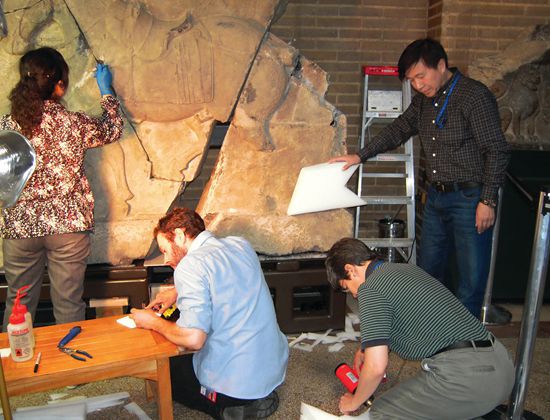
Chinese experts were invited to the US to help repair two of the famous stolen “Six Steeds of the Zhao Mausoleum” reliefs
The coolies’ task is dirty and dangerous. Raiders need to crawl into small tunnels, exposing themselves to the risk of poisonous air and flammable gases. But the lure is also obvious: “One nice bronze from the Qin or Han dynasty can buy you a big house,” Ni told The New York Times. Not that this kind of big payout is equally distributed; a “coolie” can expect to collect only a few hundred or thousand RMB per raid, even if their boss makes millions—“grand master” Yao, it’s alleged, used Hongshan artifacts as collateral when gambling at casinos.
When raids are successful, the objects often change hands through a shadowy, cross-border network of middlemen, smugglers, and dealers, before reaching private collectors or public museums, many of which are abroad. As National Geographic states, there are currently 1.63 million Chinese antiquities stored in 218 museums across 47 countries, and that number represents only a tenth of items kept in private collections globally—almost all acquired from burgled tombs.
Some argue that it’s exactly this booming market for Chinese art and antiquities that has kept the tomb-robbing business so buoyant. Lu Qinzhai, an early 20th-century art dealer also known as C. T. Loo, was believed to have single-handedly directed the ransacking of China’s antiquities in the first half of the century, most of which he sold to foreign museums and collectors through galleries he maintained in Paris and New York. It is widely believed that half of the treasured antiques and archeological objects smuggled abroad from China before 1949 went through Lu, including two of the famous “Six Steeds of the Zhao Mausoleum,” stone reliefs of horses obtained from the tomb of the Tang Emperor Taizong in Shaanxi, and sold to the University of Pennsylvania Museum in 1918.
While, admittedly, Lu’s sales contributed to Western knowledge and appreciation of East Asian antiquity, most Chinese experts consider him a criminal who wreaked immeasurable damage on China’s heritage. “C. T. Loo directly and strongly stimulated China’s tomb robbery,” Xu Jian, professor of history at Sun Yat-sen University in Guangzhou, told the Financial Times. “In the years when Loo was most active, Chinese antiquity suffered unprecedented losses.”
Even Chinese museums sometimes had to join the underground heritage-trafficking chain. “The three major Chinese museums—the Nanjing museum, the Henan Museum, and the Forbidden City all have looted objects,” Ni told ifeng.com, alleging that, in addition to legal purchases and donations, stolen goods are a main source of these collections.
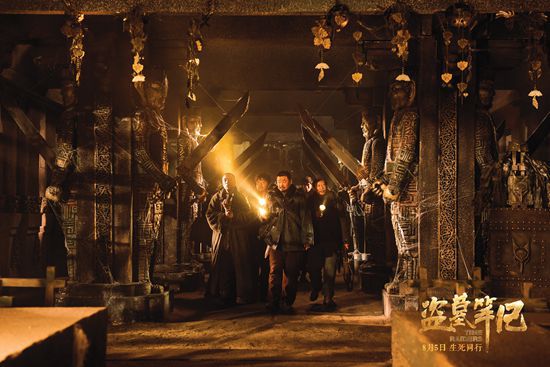
A screenshot of movie Time Raiders, adapted from hit online fiction series Grave Robbers’ Chronicles
To make matters worse, China has been experiencing “museum fever” in recent years, since TV programs like National Treasure, Masters in Forbidden City, and Every Treasure Tells a Story went viral, especially among young audiences. The State Administration of Cultural Heritage reported that, by 2016, there were a total of 4,826 museums in China. “Today’s museums don’t strictly follow the regulations when they purchase antiquities. Sometimes they know the stuff may be from stolen tombs, but they won’t ask. They choose to turn a blind eye, because if you don’t buy it quickly, others will,” Ni says. “We can’t say ‘museum fever’ is a main cause, but it does promote tomb robbery indirectly.”
What’s more, while the market is heating up, the penalties for tomb robbers have been relaxed. The 2011 amendment to the PRC’s Criminal Law abolished the death penalty for “excavating and robbing ancient ruins, ancient tombs, and fossils of paleovertebrates and paleoanthropoids.”
This amendment, of course, was met with some objections. Liu Qingzhu, an archeologist and member of the Chinese People’s Political Consultative Conference, told the Global Times that “tomb robbery is a severe crime, and the death penalty shouldn’t be abolished.” Still, under the current law, even a criminal as prominent as Yao received only a suspended death penalty with a two-year period to appeal; robbers can also have a sentence reduced through good behavior.
Wei feels it’s unfair to blame either the antique business or collectors. “Many people feel that all the cultural relics held by the collectors or in the market come from tomb raiding,” he tells TWOC. “But that’s just a small part. Most cultural relics were actually unearthed during China’s infrastructure building.” Since the 1980s, vast areas of land have made way for subway tunnels, apartment buildings, and highway networks. During this process, countless tombs were discovered and a great number of relics unearthed. It’s commonly agreed that these treasures need to be well protected. However, given that China has such an extensive history, and heritage sites are everywhere, comprehensive protection seems impossible. “The government is focusing on developing the economy, meaning they can’t pay enough attention to protecting these cultural relics, so private collectors should be counted on,” argues Wei.
“The only way for us collectors to protect these objects is to buy them.” Wei believes the revised 2017 Law on the Protection of Cultural Relics—stipulating that no individual or institution is allowed to pursue cultural relics “owned by the state, collected by a public relic-collecting unit, or from tomb robbery”—offers a legal umbrella for private collectors like him. “That means if you are not certain that an object comes from a stolen tomb, you can collect it,” Wei explains. “Everything has two sides, and one shouldn’t only focus on the negative part. “The logic here is not as simple as ‘No trading, no harm done,’” he adds. “If collectors are not allowed to buy, who can protect the relics that have been already unearthed and thrown onto the market?”
Raiders of the Lost Art is a story from our issue, “Home Bound.” To read the entire issue, become a subscriber and receive the full magazine.





